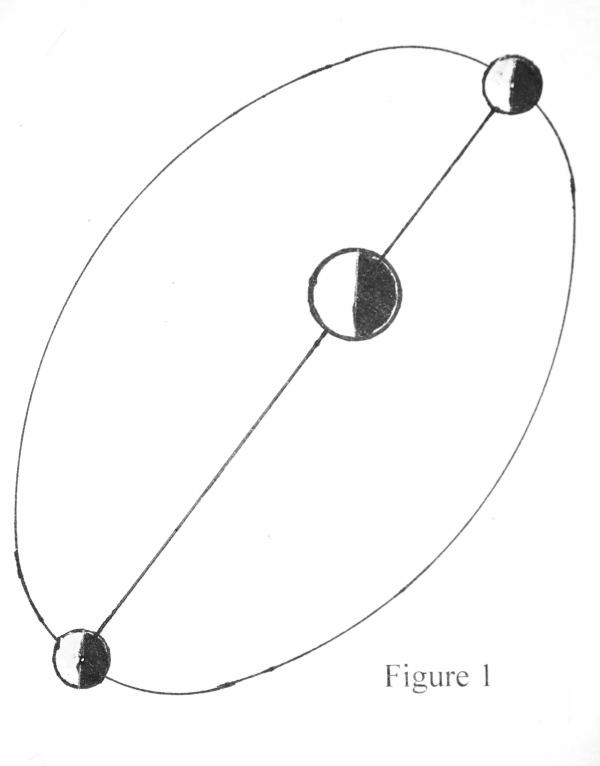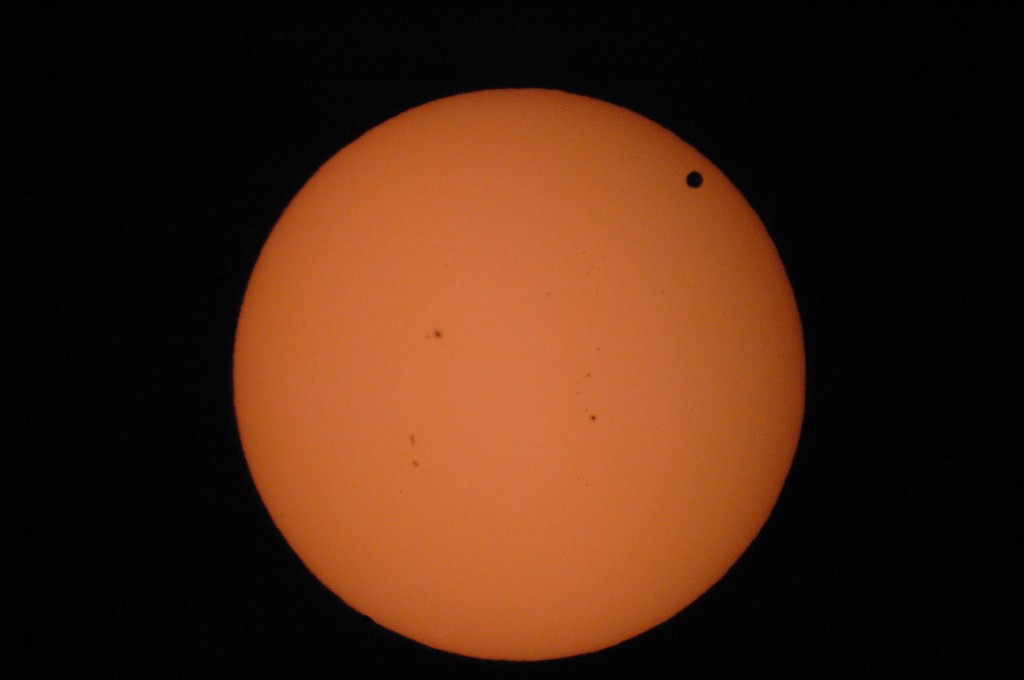There was one particular month — seems like just a few years ago — when the stars were especially well aligned for our little group of skywatchers. We saw things from new perspectives — during a memorable series of sunsets. The high point came on a trip we took out into the foothills. There we found a place to stand in the shadow of the moon.
We pitched a picnic in a grove of eucalyptus trees and watched for the afternoon sun to transform into a shimmering ring of gold. The air cooled and the sky deepened into shades of twilight. Our cameras were set up — ready to photograph the phases of this annular eclipse. The light falling through the leaves cast dapples of sun across the ground. It was May 20, 2012.
We were right on the centerline of the eclipse ground track. As we watched through the darkened glass, the moon took an ever bigger bite out of the sun. In a total solar eclipse, as the bite gets bigger, the sun becomes crescent. Its opposing horns shrink until they disappear at totality. But in this eclipse, the horns grew ever longer. Their tips finally touched, encircling the dark moon in a circle of light.
At its maximum, 95% of the sun was covered, yet the remaining ring was still too bright to look at directly. Venus came out the left of the sun — in the deep blue afternoon sky. We looked down and found that the sun-dapples of light at our feet had transformed into hundreds of flickering rings. They linked into chains with each other when the breeze rustled through the branches.

The sky retained its deep blue as the eclipse moved into its last waxing crescent. The brightening of the re-emergent sun was balanced by the onset of twilight. The moon was still too close beside it, over ridges to the northwest, to see even a fingernail crescent just after sunset.
<> <> <>
We had organized that trip on another sunset, two weeks earlier, when we gathered at a hillside bistro. Looking down into a wooded valley, we had an optimal vantage on the moonrise — clear skies, fine wine, good company. The moon reached its closest approach to Earth for the year that evening on the U. S. west coast. We called it the perigee moon. The term “supermoon” was not yet in vogue.
We could not decide how much bigger than usual that moon was, because the moonrise size illusion was in full effect. Compared to the visual cues on the far ridgeline — trees and a dry meadow dwarfed by the distance — the moon looked close enough to fly to on a short Southwest Airlines hop. We did agree that the moonlight was exceptionally bright that evening. Darkness fell quickly behind the brilliant orb that climbed in the east to dominate the night.
<> <> <>
Virtual lines in our imagination connect the stars in their constellations. On those evenings in May, 2012, two such lines among the stars had aligned for us. One was the long diameter of the moon’s orbit. The second was a line from the sun to the Earth.

The moon’s orbit is not a perfect circle — it is an ellipse. Its long axis is the “line of apsides.” That is the diameter of the orbit, at its greatest width. Figure 1 (with the ellipticity exaggerated) shows that line, connecting the two lunar positions farthest from the center of the orbit. The Earth lies on that line.
On May 5th, 2012, the line of apsides had aligned with the second line — with the nexus connecting the sun with the Earth. That alignment, shown in Fig. 2, gave us a full moon on the day the moon was closest to the Earth — providing us with the impressive perigee moonrise.

Half a lunar orbit later, on May 20th, those lines were still co-linear. On that day, the moon crossed them. That gave us a syzygy — an alignment of the sun, the moon, and the Earth — which gave us a solar eclipse. The moon was at its far apsis — the point in its orbit farthest away from the Earth — at apogee. So its disk appeared to be much reduced in size — compared to its May 5th apparition. On May 20th it was too small to cover the sun completely, so we did not have a total eclipse. The sky did not darken enough to see the streamers of the solar corona streaming out several diameters away from the sun. Nonetheless, we found the annular eclipse to be equally impressive.
<> <> <>
The line of apsides is stabilized in its spatial orientation. The huge monentum of the Earth / moon system resists changes in the line’s direction in space, as the Earth travels around the sun. As the seasons progress, the line holds its direction and moves out of alignment with the Earth-sun axis. E.g, Fig. 1 depicts a geometry in which the two lines are not aligned.
But as the year passes, the line of lunar orbital apsides does change in orientation — slowly, at its own ponderous pace. The elliptical orbit of the moon precesses, dragging the line to new directions. So when the Earth returned again to the May 5th orbital position in 2013, the line had swung 40 degrees away from its previous year’s direction. As a consequence of this precession, the alignments in the sky do not repeat on an annual cycle. The line of apsides slowly sweeps across space, moving through 360 degrees in 8.85 years.
On June 4th, 2012, half a lunar orbit after the annular eclipse, the moon was back at perigee. It again crossed the line of syzygy, and there was another eclipse. This was a partial lunar eclipse, which set in the west at dawn still shaded by the Earth. If we had departed a month earlier, after dinner on the day of the supermoon, and flown to the moon at the speed of Southwest Airlines, we could have gotten there in time to stand in the shadow of our home planet.
At the same time, another celestial body was crossing the syzygy line. That was the planet Venus. From our western U. S. perspective, Venus crossed in front of the setting sun on June 5th — a silhouette against the boiling corona. Through our cameras, Venus was a small black disk against the fiery globe — a stark transformation from its accustomed silvery evening star. It rode above the silhouette of another planet — the distant sunset ridges of Earth, to our northwest.

The string of celestial alignments brightened our evenings for that whole month, almost ten years ago. The quadruple syzygy of the sun, Venus, Earth, and the moon was very rare indeed. Eight years before that month of alignments, the western U. S. missed such a transit of Venus — it happened at night. The next one won’t happen for more than hundred years. The four events of the spring of 2012 won’t occur together again like they did — for millennia.
Notes. The orbits of the moon and planets are elliptical (as first described by Johannes Kepler). Ellipses have two foci. The Earth sits at one focus of the elliptical orbit of the moon; the other focus is empty. The two widest points of the ellipse (the apsides) and its two foci are connected by the line of apsides. The moon was at its orbital apsis closest to the Earth (perigee) on May 5, 2012. The line of apsides happened to be aligned with the Earth:sun axis on that day. This was the closest full moon of the year, maximally close at 7:30 p.m. Pacific Daylight time. A “supermoon” was visible to the whole world that night. It appeared 30% brighter than would an apogee full moon (which would sit on the apsis on the far side of the lunar orbit from the Earth). The annular eclipse of May 20th 2012, in contrast, was not visible the world over. Its maximal duration was visible from land across less than one quarter of one percent of Earth’s surface (including a portion of the track passing over viewers like our group, in Northern California). Images of the sun projected onto the ground in the gaps between the leaves overhead (the pin-hole camera effect) were transformed to rings.
The sun was eclipsed by the Earth, as seen from the moon, on June 4th, 2012. It was even less likely to be viewed than the annular eclipse of May 30th– no people witnessed it. The shadow of the Earth on the moon was visible across most of the Earth, as a partial lunar eclipse.
Fig. 2 shows the geometry of the alignment of the lunar line of apsides with the Earth:sun axis. The sun (off, to the left), the Earth, and the moon were so aligned in 2012 (relative dimensions in Fig.s 1 and 2 are not to scale). The figure shows the moon at its position of May 20 (to the left of the Earth, where it passed in front of the sun) and also shows the moon at its position of June 4, where it fell into Earth’s shadow.

The transit of Venus was visible (through sun filters) to most of the world on June 5th and 6th. On the western U. S. coast, it was partially visible — the sun set in mid-transit. Transits of Venus across the sun come in pairs, which are separated from each other by 8 years. Those pairs are separated from each other by 105 years. An airliner flight (400 mph) would bring passengers to the moon (221,802 miles away at perigee) in 22 days — six days less than one lunar orbital cycle.
The orientation of the lunar line of apsides is held steady by the momentum of the Earth/moon system. Half way around the sun’s orbit, in November 2012, the line came back into alignment with the radius line to the sun — as it had been aligned in March, but with the sun on the opposite side of the Earth and moon. In May of 2012 the perigee moon had been full, whereas in November, with the sun on the opposite side, at perigee it was a super-new moon. The next day, the moon’s waxing first crescent rimmed a larger-than-average lunar disk at sunset. The dark side was uncommonly bright blue in reflected Earthshine.
Photo credits: annular eclipse of 2012 — flanked by images of the crescent phases in the order (left to right) of their appearances (C. Pinkerton); Venutian solar transit of 2012 against the face of the setting sun (P. Feldstein).
Steve Daubert speaker nature bay area
